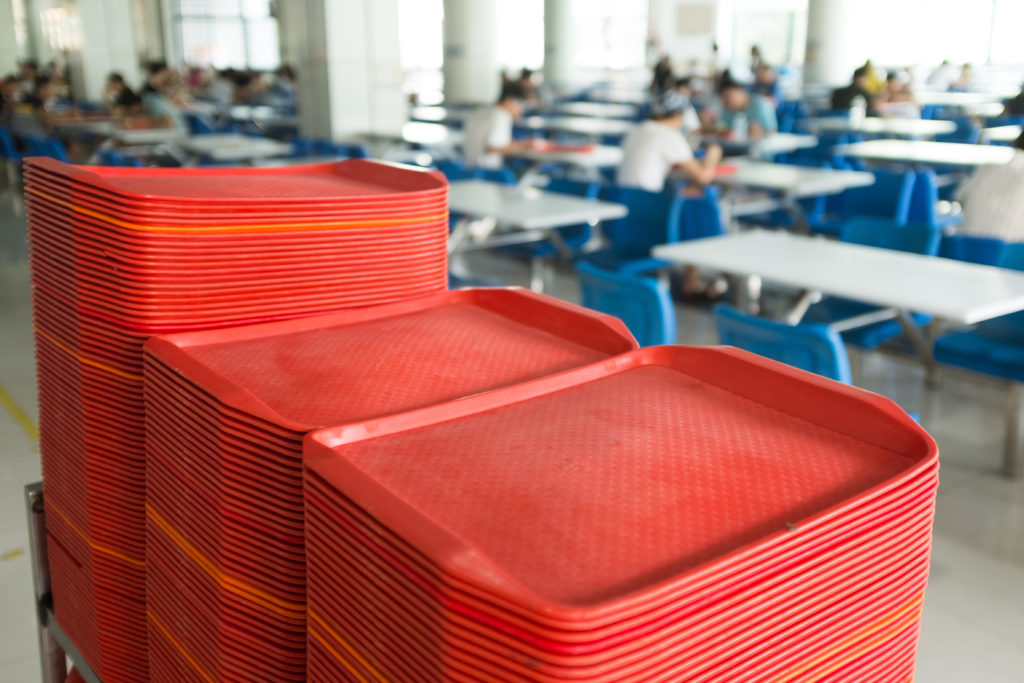Matthew Good, MS, RD, LD
The onset of any new school year is inevitably met with struggle for students, parents, and administration alike. This year has sadly seen the reemergence of an issue that had generally receded for the past two years. Schools have recently been forced to resume the more traditional “free, reduced, paid” meal model following universal free meals during the pandemic, paving the way for student meal debt to again increase. Without diligence and delicacy, addressing student meal debt can carry the unfortunate adjunct of lunch shaming.
What is Lunch Shaming?
Lunch shaming involves any action that openly identifies a student’s ability to pay for a school meal.
Let’s say there’s a student whose household income qualifies them for reduced-price meals and they attend a school that charges the reduced-prices of $0.30 for breakfast and $0.40 per lunch. This particular student has accumulated debt on their account. While this example is fictitious, students in similar situations have experienced:
- Being refused meal service at the point of sale in front of their classmates.
- Being forced to take an alternative meal, which classmates might know is reserved for students who owe money.
- Having their meal thrown in the trash in front of them by the cashier.
- Having to wipe down tables or sweep the cafeteria to repay their meal for the day.
- Being marked with a marker as a message to their parents that they owe money.
- Being restricted from school events or participating in extracurriculars.
As stated by the Education Data Initiative, the unfortunate truth is that the national public school meal debt is $262 million annually, which averages just over $170 per student. It’s also estimated that 1.54 million students cannot afford school meals. It’s essential to know that to participate in the National School Lunch Program, the USDA mandates that schools attempt to collect meal debt, and that the cafeteria account cannot cover that debt. These unpaid meal charges must be paid from the school’s general fund, charitable donations, or other sources.
What’s Being Done About It?
While there is no federal guidance, some states are taking it upon themselves to curb lunch shaming. California, for example, has prohibited alternative meals, throwing away of meals, work-for-meal programs, and denial of participation in school activities. California also mandates any communication to be with the parent directly and not through the student. New Mexico has passed legislation similar to California, and many other states are attempting to address the issue on their upcoming ballots.
Could Anti-Lunch Shaming Worsen School Meal Debt?
Suggesting such a strong stance against lunch shaming may trigger concerns of debt leniency and subsequent excessive financial burden for schools. However, a study published in the Journal of Child Nutrition & Management found no such need for alarm. This research indicated no statistically significant relationship between the strength of a school’s anti-shaming policy and the amount of debt owed. Simply put, shaming-type actions (refusing meal provision, forced alternative meals, etc.) did not decrease student debt compared to strong anti-shaming policies.
Sadly, although these shaming tactics have proven to be ineffective, the USDA’s Special Nutrition Program Operations Study discovered that 60.1% of schools in the United States force an alternative meal upon students that are in debt, and 35.5% enforce further administrative actions, such as withholding grades or preventing participation in graduation.
Actionable Steps
The first step is to take a long, hard look at your school district’s operation and identify to what degree lunch shaming might be happening under your watch. Check out i3 Education’s self-assessment tool (CLICK HERE) to help you find these overt and covert mishaps.
One approach to reducing shaming is to reduce meal debt directly. For example, it is not federally mandated to charge a meal fee for categorically “reduced” students. We know that these students’ households are facing financial burden. Is it financially possible for your district to eliminate the meal charge for these students?
Another approach that could indirectly reduce meal debt is to make free and reduced meal benefits for students and households easier to achieve. For example, i3 Education offers cloud-based application software, QuikApps, which increases benefit accessibility for households. This is just a small portion of their arsenal of school software solutions.
Regardless of what steps your school district can implement to prevent lunch shaming, the most crucial framework of your policy should start with leaving the kids out of it. If a student finds they are in meal debt by any action taken by your district, you’ve opened the door to lunch shaming.
